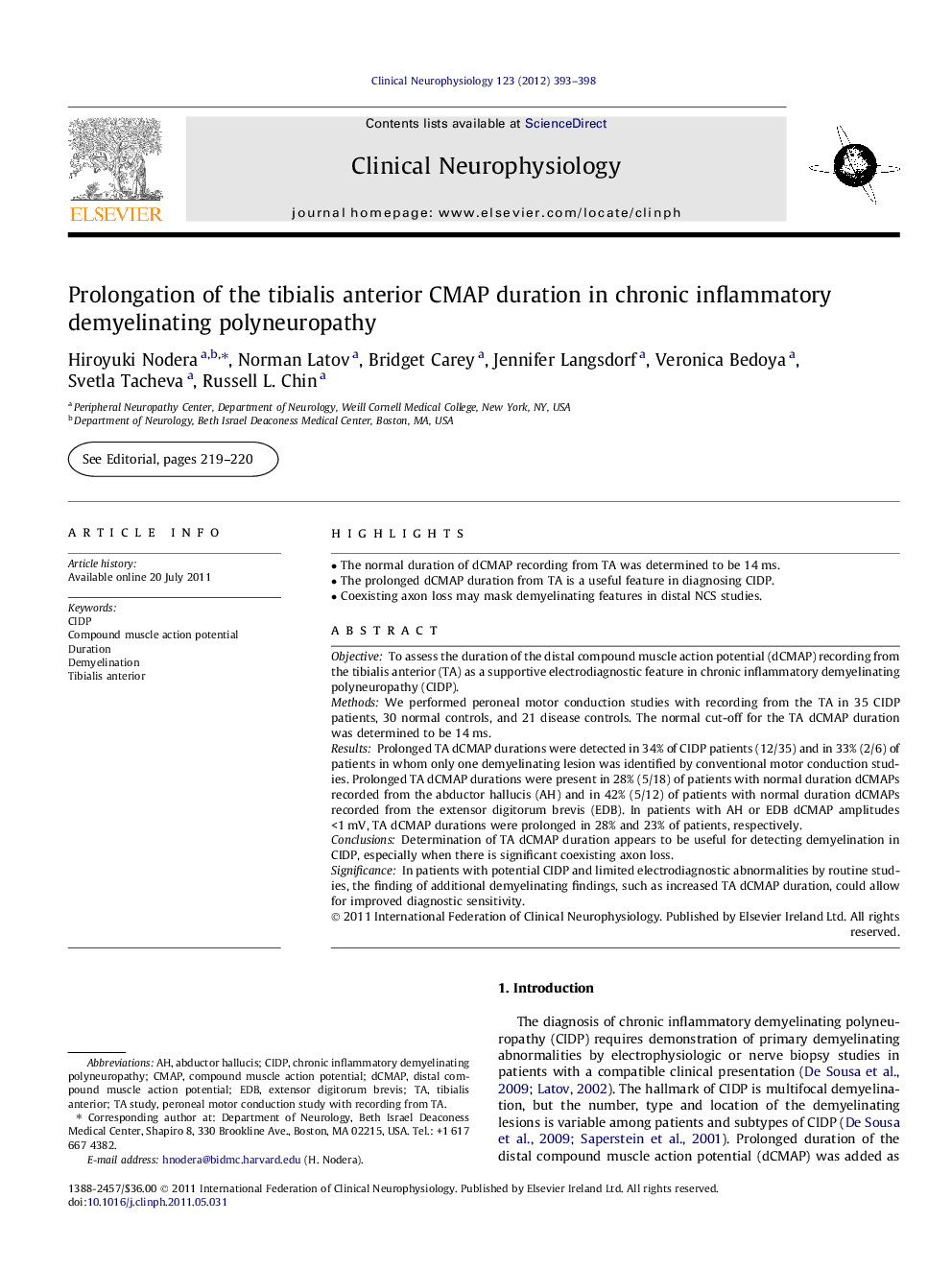| Article ID | Journal | Published Year | Pages | File Type |
|---|---|---|---|---|
| 3045640 | Clinical Neurophysiology | 2012 | 6 Pages |
ObjectiveTo assess the duration of the distal compound muscle action potential (dCMAP) recording from the tibialis anterior (TA) as a supportive electrodiagnostic feature in chronic inflammatory demyelinating polyneuropathy (CIDP).MethodsWe performed peroneal motor conduction studies with recording from the TA in 35 CIDP patients, 30 normal controls, and 21 disease controls. The normal cut-off for the TA dCMAP duration was determined to be 14 ms.ResultsProlonged TA dCMAP durations were detected in 34% of CIDP patients (12/35) and in 33% (2/6) of patients in whom only one demyelinating lesion was identified by conventional motor conduction studies. Prolonged TA dCMAP durations were present in 28% (5/18) of patients with normal duration dCMAPs recorded from the abductor hallucis (AH) and in 42% (5/12) of patients with normal duration dCMAPs recorded from the extensor digitorum brevis (EDB). In patients with AH or EDB dCMAP amplitudes <1 mV, TA dCMAP durations were prolonged in 28% and 23% of patients, respectively.ConclusionsDetermination of TA dCMAP duration appears to be useful for detecting demyelination in CIDP, especially when there is significant coexisting axon loss.SignificanceIn patients with potential CIDP and limited electrodiagnostic abnormalities by routine studies, the finding of additional demyelinating findings, such as increased TA dCMAP duration, could allow for improved diagnostic sensitivity.
► The normal duration of dCMAP recording from TA was determined to be 14 ms. ► The prolonged dCMAP duration from TA is a useful feature in diagnosing CIDP. ► Coexisting axon loss may mask demyelinating features in distal NCS studies.
